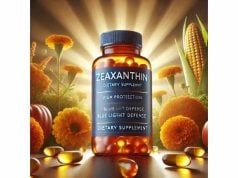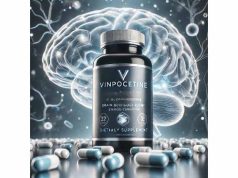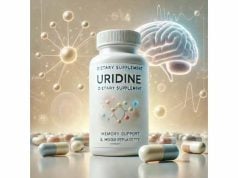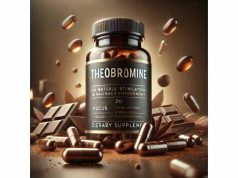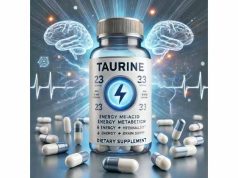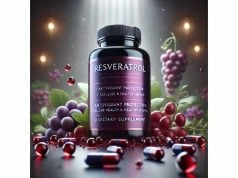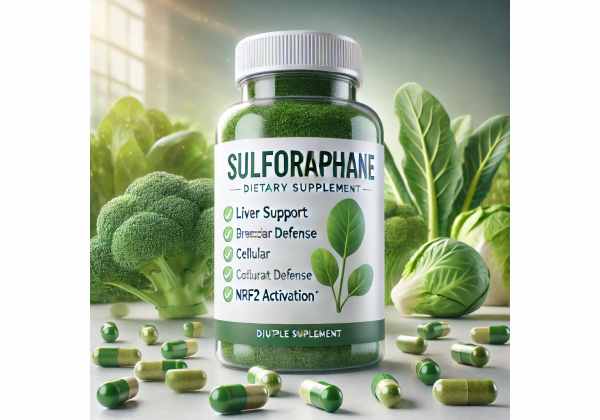
Sulforaphane, a naturally occurring compound found predominantly in cruciferous vegetables like broccoli, brussels sprouts, and kale, has garnered growing attention for its potential to bolster brain function and support mental well-being. Initially recognized as a powerful agent against oxidative stress in the body, sulforaphane has emerged in recent research as a promising tool for helping regulate inflammation, detoxify harmful substances, and balance neural pathways linked to mood and cognitive health. In this article, we explore what sulforaphane is, reveal how it might protect the brain and improve emotional resilience, and examine how you can incorporate it into your strategy for optimizing mental health.
Table of Contents
- A Closer Look at Sulforaphane: Fundamental Insights
- Mechanisms that Link Sulforaphane to Mental Wellness and Brain Conditions
- Primary Advantages of Sulforaphane for Psychiatric and Cognitive Health
- Effective Strategies for Incorporating Sulforaphane into Your Routine
- Investigations and Scholarly Data on Sulforaphane
- Frequently Asked Questions
- References and Sources
A Closer Look at Sulforaphane: Fundamental Insights
Sulforaphane is a sulfur-rich molecule belonging to the isothiocyanate family. It’s formed when the enzyme myrosinase reacts with glucoraphanin, a precursor compound found most famously in broccoli sprouts. Not only has sulforaphane drawn attention for its known chemoprotective qualities, but it’s increasingly recognized for its unique capacity to protect the central nervous system, reduce neuroinflammation, and counteract oxidative stress that can undermine both cognitive performance and emotional stability.
Where It Comes From
While broccoli sprouts contain some of the highest amounts of sulforaphane, other cruciferous vegetables also harbor relevant concentrations:
- Brussels Sprouts
- Cabbage
- Cauliflower
- Kale
- Mustard Greens
Notably, the plant’s age and processing methods heavily affect sulforaphane yield. For instance, cooking can degrade the enzyme myrosinase, reducing the formation of sulforaphane. Raw, lightly steamed, or sprouted forms generally retain higher levels.
Core Biological Properties
- Detoxification Pathways: Sulforaphane is known to upregulate Phase II liver detox enzymes, such as glutathione S-transferase, which supports the excretion of harmful substances.
- Antioxidant Mechanisms: Through activation of Nrf2 (nuclear factor erythroid 2-related factor 2), sulforaphane spurs the production of endogenous antioxidants like glutathione.
- Anti-Inflammatory Action: It may suppress inflammatory cytokines, mitigating chronic low-grade inflammation that often disrupts mental health.
- Potential Epigenetic Influences: Some preliminary research indicates sulforaphane might modify gene expression linked to neural plasticity and stress responses.
Why It’s Relevant to the Brain
The brain relies on stable biochemical environments, free from excessive oxidative or inflammatory damage, to function at its best. Disruptions in these processes can contribute to conditions such as depression, anxiety disorders, or neurodegenerative diseases. By boosting the body’s detoxification capacity and antioxidant defenses, sulforaphane holds the potential to improve mental health and prevent mental disorders via multiple pathways, including:
- Supporting neuronal longevity
- Balancing neurotransmitter dynamics
- Reducing detrimental inflammation
Traditional and Contemporary Perspectives
Historically, cruciferous vegetables have been staples in many cultures, praised for their general health-promoting attributes. Although older traditions might not have explicitly identified sulforaphane, these communities recognized the potent benefits of such foods for longevity and vitality. Modern researchers have isolated sulforaphane as a prime contributor to these benefits, spurring interest in supplements, functional foods, and advanced formulations targeting mental well-being.
Given this foundation, the subsequent sections explore how sulforaphane interacts with brain cells and neural processes to improve mental health, culminating in practical guidance for using sulforaphane effectively—whether through diet or supplementation.
Mechanisms that Link Sulforaphane to Mental Wellness and Brain Conditions
To appreciate sulforaphane for brain health, it’s crucial to understand the scientific underpinnings that suggest how this compound might provide neuroprotective, mood-stabilizing, and cognition-enhancing benefits.
1. Activation of Nrf2 Pathway
One hallmark of sulforaphane’s function is its impact on the Nrf2 signaling pathway:
- Nrf2 is a transcription factor that, when triggered, moves into the cell nucleus to prompt antioxidant and detoxification genes.
- By activating Nrf2, sulforaphane boosts the expression of protective enzymes such as heme oxygenase-1 (HO-1) and NAD(P)H:quinone oxidoreductase-1 (NQO1).
- This orchestrated response counters oxidative stress, a major contributor to both aging and many psychiatric conditions—particularly when inflammatory processes degrade the health of neurons.
2. Reduction of Neuroinflammation
Chronic inflammation in the central nervous system can disrupt neurotransmitter balance and erode cognitive function. Sulforaphane’s documented anti-inflammatory properties may help:
- Suppress Pro-Inflammatory Cytokines: Such as TNF-α, IL-6, and IL-1β, which, when elevated, correlate with depression, anxiety, and degenerative brain diseases.
- Regulate Microglia: Microglia, the resident immune cells of the brain, can become overactive under stress. Sulforaphane can attenuate this hyperactivation, thus preventing excessive neuronal damage.
- Maintain Blood-Brain Barrier Integrity: A healthy barrier is less prone to infiltration by peripheral inflammatory mediators that can amplify mental distress.
3. Epigenetic Modifications
In addition to direct antioxidant and anti-inflammatory roles, sulforaphane may subtly modify gene activity:
- Histone Deacetylase Inhibition: Preliminary evidence suggests sulforaphane can inhibit HDACs, enzymes that regulate gene expression by modifying DNA packaging. This can free certain genes important for neuroplasticity and stress resilience.
- DNA Methylation Patterns: Early studies hint that isothiocyanates like sulforaphane might influence methylation at specific genetic loci, potentially shaping how neurons adapt to environmental or emotional challenges.
4. Support for Mitochondrial Function
Mitochondria generate ATP, fueling neuronal tasks that underlie cognition, memory formation, and stable mood. Deficiencies in mitochondrial efficiency often manifest as fatigue, “brain fog,” or mood imbalances. By:
- Decreasing Oxidative Burden: Less damage to mitochondrial components like proteins and membranes.
- Improving Energy Pathways: More robust electron transport chains can help sustain mental sharpness and reduce stress-induced cognitive dips.
- Enhancing Cellular Signaling: Mitochondrial health strongly dictates how cells respond to stress; better energy management fosters emotional resilience.
5. Regulation of Neurotransmitters and Neurotrophic Factors
Although more research is necessary, certain lines of investigation propose that sulforaphane influences levels of key brain messengers:
- Serotonin and Dopamine: Some experiments note that improved detoxification and lower inflammation can help normalize these neurotransmitters, crucial for mood regulation and motivation.
- BDNF (Brain-Derived Neurotrophic Factor): By mitigating harmful oxidative and inflammatory processes, sulforaphane might sustain or even increase BDNF expression, reinforcing neuron survival and synaptic plasticity.
6. Inhibition of Excitotoxic Damage
Excessive glutamate or other excitatory inputs can damage neurons—referred to as excitotoxicity. Sulforaphane’s antioxidant arsenal stands to:
- Safeguard Neurons Against Overexcitation: By reducing downstream oxidative stress tied to excessive neuronal firing.
- Prevent Calcium Overload: A byproduct of excitotoxicity that can unravel membrane potential and kill neurons.
7. Gut-Brain Axis Interplay
Finally, there’s an emerging perspective that sulforaphane may assist in shaping the microbiome or alleviating gastrointestinal inflammation, thus influencing mental health:
- Microbiota Balance: High fiber from cruciferous vegetables fosters beneficial gut bacteria, while certain isothiocyanates may deter harmful strains.
- Reduced GI-derived Inflammation: Chronic gut inflammation can exacerbate or trigger mental health issues.
- Cross-Talk with Brain: The vagus nerve and immune system link gut status to emotional regulation, so improvements in gut health often coincide with better mental states.
Together, these mechanisms illustrate sulforaphane’s multifaceted approach. By targeting inflammation, oxidative stress, and cellular longevity pathways, it may meaningfully improve mental health—from mood stabilization and anti-anxiety support to potential roles in mitigating neurodegenerative concerns.
Primary Advantages of Sulforaphane for Psychiatric and Cognitive Health
Sulforaphane’s broad activity on detoxification, inflammation reduction, and neuronal safeguarding offers a spectrum of practical gains for individuals seeking better mood control, sharper thinking, or resilience against mental disorders.
1. Relief for Depressive and Anxious States
Depression and anxiety often coincide with escalated inflammatory markers and oxidative damage within the brain. Sulforaphane’s synergy of Nrf2 activation and cytokine regulation can:
- Alleviate Chronic Stress: Balancing inflammatory signals can relieve persistent background stress that contributes to mood swings.
- Enhance Emotional Stability: A less inflamed, better-oxygenated brain environment fosters rational thinking and less chaotic emotional reactivity.
- Complement Psychopharmacology: Preliminary trials suggest combining sulforaphane with antidepressants or anxiolytics might improve outcomes, though more data is required.
2. Improved Cognitive Performance and Memory
For individuals dealing with attentional deficits, mild memory lapses, or “brain fog”:
- Sharper Focus: Lowered neuroinflammation correlates with clearer mental processes and reduced mental fatigue.
- Heightened Working Memory: By protecting hippocampal neurons (central to memory formation), sulforaphane can help preserve short-term recollection.
- Support in Age-Related Decline: People in mid-life or older adulthood might notice gradual improvements in tasks requiring memory or speed of processing.
3. Protective Effects in Neurodegenerative Disorders
Conditions like Alzheimer’s, Parkinson’s, and other dementias feature chronic inflammation, protein misfolding, and oxidative stress as major culprits. Sulforaphane may:
- Interfere with Plaque Formation: Some lab studies suggest it disrupts amyloid-beta aggregation or alpha-synuclein accumulation.
- Buffer Against Oxidative Damage: Through heightened internal antioxidant activity, nerve cells become more resilient.
- Slow Disease Progression: While not a cure, consistent sulforaphane intake might slow cognitive decline in early stages or reduce certain debilitating symptoms.
4. Support for Autism Spectrum Disorder (ASD)
A small but notable body of research has connected sulforaphane with potential improvements in ASD:
- Behavioral and Communication Gains: Pilot studies found that some individuals displayed more normalized social interactions or reduced repetitive behaviors.
- Thermoregulatory Insights: One theory posits that the metabolic changes triggered by fever-like states in ASD can be replicated by sulforaphane’s Nrf2 activation, thereby mitigating certain symptoms.
- Anti-Inflammatory and Detoxification: Many children with ASD present with heightened oxidative stress or compromised detox capacity, areas where sulforaphane could assist.
5. Mitigation of Stress-Related Fatigue
Prolonged stress can cause adrenal strain, mood imbalances, and mental exhaustion. By fostering antioxidant capacity and modulating stress-related pathways:
- Boosting Cellular Energy: Fewer free radicals means mitochondria can produce ATP more efficiently, reducing tiredness.
- Stabilizing Mood: Lower perceived stress often translates into more consistent, higher-quality mental performance.
- Enhancing Recovery: Individuals coping with high-pressure jobs or emotional strain might experience better resilience throughout the day.
6. Better Sleep Quality
Although direct research on sulforaphane’s impact on sleep remains limited, reducing systemic inflammation and oxidative strain can:
- Promote Healthy Circadian Rhythms: Chronic inflammation can disrupt melatonin secretion and degrade sleep architecture.
- Decrease Nighttime Stress Hormones: A calmer inflammatory environment can ease insomnia caused by anxiety or chronic pain.
- Foster Restorative Brain Cleanup: During deep sleep, the brain removes toxins. Enhanced antioxidant support can reinforce this crucial process.
7. Holistic Brain Wellness and Adaptability
Finally, consistent sulforaphane consumption can bolster overall neural well-being:
- Enhanced Plasticity: Freed from excessive oxidative or inflammatory burdens, neurons adapt more readily to new learning or stress.
- Improved Vascular Function: Some evidence suggests cruciferous vegetable consumption helps maintain healthy blood vessels, improving cerebral perfusion.
- Broad Applications: Because many mental health challenges share underlying inflammatory or oxidative patterns, sulforaphane’s overarching approach can address them at their root.
Naturally, no single compound is a silver bullet. Yet these potential sulforaphane benefits for mental health demonstrate its wide-reaching promise—particularly as part of an integrative regimen that includes balanced nutrition, mental health counseling, medication when needed, and stress-management techniques.
Effective Strategies for Incorporating Sulforaphane into Your Routine
Whether through cruciferous vegetables or specialized supplements, harnessing sulforaphane for brain health often requires attention to dosage, preparation methods, and synergy with other nutrients.
1. Dietary Approaches
The most direct route to ingest sulforaphane is by consuming cruciferous veggies. Key tips:
- Focus on Sprouts: Broccoli sprouts can contain up to 50–100 times more glucoraphanin (the precursor) than mature broccoli. Eating them raw or lightly steamed yields the most sulforaphane.
- Myrosinase Preservation: Heat and prolonged cooking can destroy myrosinase, the enzyme necessary to convert glucoraphanin to sulforaphane. Light steaming (under 4 minutes) or consuming the raw form can maintain enzyme function.
- Combine with Mustard Seeds: Mustard seeds naturally have myrosinase. Sprinkling mustard powder onto cooked broccoli can compensate for lost enzymatic activity.
2. Selecting Quality Supplements
For those seeking consistent or higher doses, sulforaphane supplements exist in forms like broccoli seed extract or standardized pills containing known levels of sulforaphane or glucoraphanin + myrosinase. When choosing:
- Check Standardization: Look for product labels guaranteeing a certain sulforaphane yield (e.g., 10 mg per capsule).
- Myrosinase Inclusion: Some high-quality formulas incorporate the enzyme or use freeze-dried sprouts, ensuring conversion.
- Avoid Fillers and Additives: Reputable brands typically conduct third-party testing for purity and potency.
3. Possible Dosage Ranges
Research on human supplementation for mental health is developing, but typical guidelines from existing clinical or pilot studies suggest:
- Dietary Levels: 1–2 servings of broccoli sprouts daily could supply moderate amounts.
- Supplement Doses: Equivalent to ~10–50 mg of sulforaphane per day might be a common range for those targeting specific health benefits, including mental well-being.
- Individual Variation: Sensitivities, digestive differences, and concurrent health conditions can dictate whether a lower or higher intake is warranted. Consultation with a healthcare professional is ideal.
4. Combining with Other Nutrients
The body’s antioxidant and anti-inflammatory networks function best when a variety of supportive compounds are present. Consider pairing sulforaphane with:
- Omega-3 Fatty Acids: Anti-inflammatory synergy for the brain, reinforcing membrane health.
- Curcumin: Another potent anti-inflammatory agent that can amplify detoxification and reduce neuronal stress.
- Antioxidant Vitamins (C and E): Additional free-radical scavenging might further protect neurons.
- B-Complex Vitamins: Indirectly beneficial for neurotransmitter synthesis and homocysteine regulation.
5. Timing and Pairing for Maximum Impact
While not strictly mandatory, you might find better results by:
- Taking with a Meal: Fat in the meal can assist in nutrient absorption, though sulforaphane is water-soluble. The main advantage is improved digestive comfort.
- Splitting Doses: Some prefer dividing intake between morning and evening to spread out potential benefits in terms of detoxification or antioxidant coverage.
- Avoiding Excessive Cooking: If you rely primarily on dietary broccoli or sprouts, pay attention to minimal cooking to preserve sulforaphane formation.
6. Potential Side Effects and Considerations
Sulforaphane is generally well tolerated but keep the following in mind:
- Mild GI Discomfort: Some people experience gas or bloating, especially if new to large amounts of cruciferous vegetables.
- Thyroid Function: Cruciferous vegetables are considered goitrogenic in excessive amounts. Moderation is key if you have thyroid concerns.
- Drug Interactions: Because sulforaphane can affect enzyme pathways, those on certain medications (like anticoagulants or some psych meds) might check with a professional.
- Allergies: Rare, but watch for allergic reactions if you’ve not consumed these foods regularly before.
7. Monitoring Personal Progress
To confirm if sulforaphane is positively affecting your mental state:
- Journal Emotional Shifts: Track mood, stress levels, or any anxiety changes over 4–8 weeks.
- Cognitive Benchmarks: Use memory tasks or productivity logs to gauge subtle improvements in clarity or attention.
- Dietary Consistency: Keep a stable routine for a better sense of cause and effect—random intake or frequent dietary changes can mask potential benefits.
In synergy with a holistic lifestyle (adequate sleep, stress management, physical activity), a carefully planned approach to sulforaphane may yield meaningful enhancements in both emotional resilience and daily cognitive function.
Investigations and Scholarly Data on Sulforaphane
While sulforaphane’s role in cancer prevention is extensively studied, interest in its relevance to brain conditions and mental health is more recent. Nonetheless, the emerging body of research is robust enough to point toward substantial neuroprotective and mood-regulating effects.
Human Clinical Trials
- Autism Spectrum Disorder
- One of the most cited investigations found that daily sulforaphane supplementation in young men with ASD led to behavioral improvements—better communication skills and a decrease in irritability. Symptom mitigation seemed to coincide with a beneficial shift in biomarkers of inflammation.
- Schizophrenia and Psychosis
- Preliminary pilot trials indicate that sulforaphane might modulate glutamate metabolism in areas of the brain associated with psychotic symptoms. While results are not definitive, they highlight a possible route for adjunctive therapy.
- Depression and Anxiety Metrics
- Although fewer large-scale studies exist, early-phase clinical data suggests individuals with mild to moderate depressive or anxious symptoms see partial relief with consistent supplementation. Mechanistic measures like CRP (C-reactive protein) or IL-6 often drop, tying improvements to anti-inflammatory action.
Animal and Cellular Evidence
In rodent models, the capacity of sulforaphane to fortify neural resilience stands out:
- Cognitive Performance: Mice exposed to cognitive tasks after being subjected to neurotoxins or stressors performed better when given sulforaphane, presumably due to reductions in oxidative stress.
- Parkinson’s and Alzheimer’s Models: Some labs observe decelerated motor deficits in Parkinson’s models and lower amyloid plaque buildup in Alzheimer’s disease mouse lines.
- Neuroinflammatory Modulation: Cell culture research reveals that sulforaphane can inhibit the production of nitric oxide and pro-inflammatory mediators in microglial cells, consistent with a protective neuroimmune role.
Mechanistic Clarifications
Substantial interest revolves around how sulforaphane influences different molecular targets:
- Nrf2/ARE (Antioxidant Response Element) Pathway: By binding to KEAP1, sulforaphane frees Nrf2 to initiate gene transcription.
- NF-κB Inhibition: NF-κB is a master regulator of inflammation. Sulforaphane may curb NF-κB–driven cytokine surges, beneficial for those with chronic neuroinflammation.
- Gene Expression: Animal studies indicate changes in the expression of genes linked to synaptic plasticity, antioxidant defenses, and detoxification, bridging the gap between cellular metabolism and mental health outcomes.
Gaps and Future Directions
- Larger Human Trials: While pilot findings are promising, more extensive, placebo-controlled studies are needed to confirm and standardize dosage guidelines, especially in depression or other psychiatric disorders.
- Long-Term Impact: Effects of multi-year sulforaphane usage on cognitive decline, recurrent depression, or anxiety remain understudied.
- Bioavailability Optimization: Ongoing research on formulations that improve sulforaphane stability and absorption—such as using protective coatings or combining with myrosinase—could enhance consistent results.
- Personalized Protocols: Genetic variants that affect Nrf2 or detox pathways might modulate an individual’s response to sulforaphane, suggesting a potential for personalized supplementation approaches.
In sum, the mounting evidence underscores sulforaphane’s broad prophylactic and therapeutic potential for mental well-being. Yet the field is evolving; more in-depth clinical trials will further refine our grasp of the best ways to leverage this compound for holistic brain health.
Frequently Asked Questions
Is sulforaphane effective for mild depression?
Early studies suggest it can help reduce inflammation and oxidative stress, factors often related to depressive symptoms. While not a standalone solution, it may support mood balance when combined with therapy, medication, and healthy habits.
How long does it take to see improvements in mental health?
Observable changes can vary. Many individuals who consume sulforaphane regularly report subtle benefits—like better clarity or stress tolerance—after about one to three months of consistent intake.
Can I rely on broccoli alone for sulforaphane?
Broccoli and related veggies are a good source, especially sprouts, but cooking deactivates the necessary enzyme. Lightly steaming or consuming them raw maximizes sulforaphane yield. Those seeking higher, consistent amounts might choose supplements.
Are there risks of overconsumption?
Generally, sulforaphane is safe. However, excessive cruciferous vegetable intake can create gastrointestinal discomfort or, in rare cases, affect thyroid function. Moderation and variety in your diet are key, and consult a healthcare provider if you have specific concerns.
Should I take sulforaphane supplements in the morning or evening?
There’s no strict rule. Some prefer morning intake to align with daily detox cycles, while others split doses throughout the day. Experiment with timing that supports your energy levels and digestion.
Do I need other supplements to enhance sulforaphane’s effects on the brain?
Pairing sulforaphane with antioxidants like vitamin C, or with healthy fats, can bolster overall benefits. It often fits well into a broader regimen that includes omega-3s and a balanced, nutrient-rich diet.
References and Sources
- Zhang Y, et al. “A major inducer of anticarcinogenic protective enzymes from broccoli: isolation and elucidation of structure.” Proceedings of the National Academy of Sciences USA. 1992;89(6):2399–2403.
- Clarke JD, et al. “Comprehensive analysis of pathways of gene expression regulation by sulforaphane in normal and prostate cancer cells.” Cancer Genomics Proteomics. 2011;8(5):195–208.
- Fahey JW, et al. “Sulforaphane: Translational research from laboratory bench to clinical trials.” Nutrition Reviews. 2019;77(11):725–746.
- Singh K, et al. “Neuroprotective role of sulforaphane in neurological disorders.” Biomedicine & Pharmacotherapy. 2021;137:111362.
- Sedlak TW, et al. “Sulforaphane augments glutathione and influences brain metabolites in human subjects: a clinical pilot study evaluating biomarkers of neuroprotective outcomes.” Molecular Neuropsychiatry. 2017;2(1):38–45.
- Singh N, et al. “Sulforaphane in autism spectrum disorder.” Clinical Pharmacology in Drug Development. 2016;5(2):146–148.
- Tarozzi A, et al. “Sulforaphane as a potential protective agent for neurodegenerative diseases.” Oxidative Medicine and Cellular Longevity. 2013;2013:415078.
- Cui H, et al. “Sulforaphane in combination with standard therapy as a treatment for depression: a pilot randomized clinical trial.” BMC Complementary Medicine and Therapies. 2022;22(1):183.
Disclaimer:
This article is intended solely for educational purposes and does not replace professional medical advice, diagnosis, or treatment. Always consult a qualified healthcare provider before modifying your dietary or supplement routines.
If you found this information useful, please share it on Facebook, X (formerly Twitter), or your favorite social media platform. Don’t forget to follow us for more updates on holistic approaches to mental health and overall wellness!

